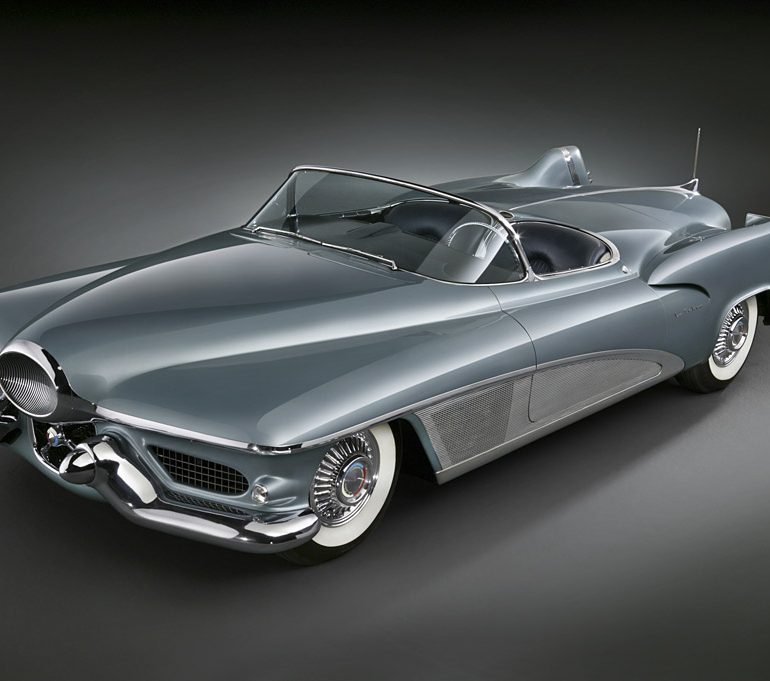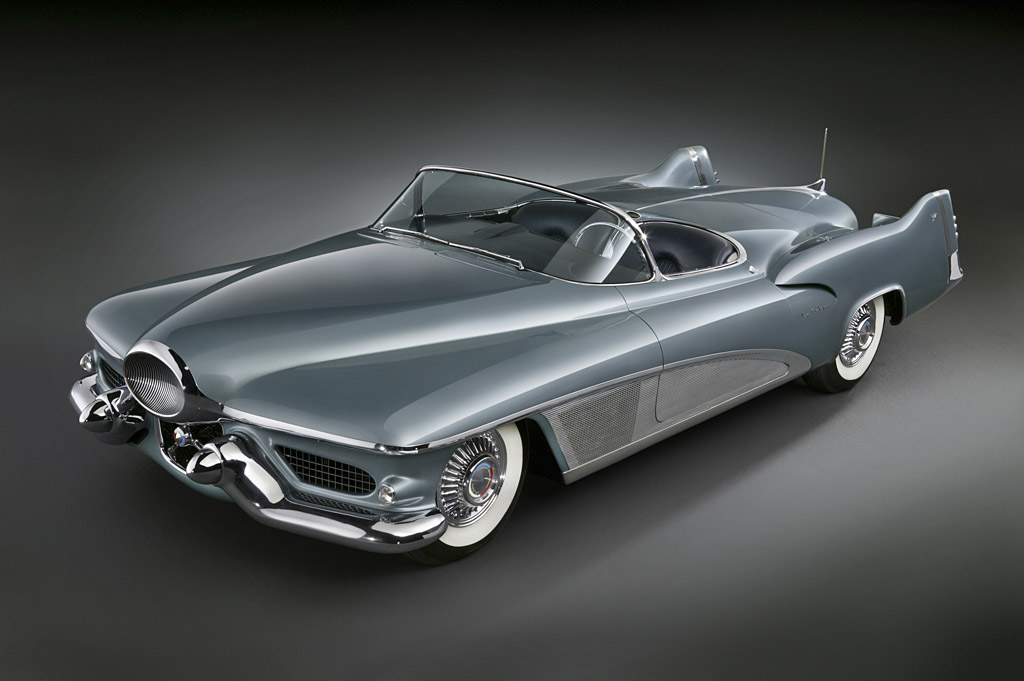1951 Buick LeSabre
By 1949, Harley Earl had discovered a fresh source for inspiration – the jet plane. Enamored by proportions and technology, Earl commissioned the LeSabre.
Like the aircraft it emulates, the LeSabre is made entirely of lightweight aluminum, fiberglass and magnesium. Jet inspired cues including rear fins impart dramatic styling and presence. The LeSabre also features the first ever wraparound windshield. The LeSabre became a traveling ambassador for GM overseas and remains amongst the most famous Motorama cars.
The collaboration between Earl and Chayne on the Buick Y-Job soon produced other imaginative Buick concept cars. In 1951, the pair created two new dream cars, LeSabre and XP-300. These vehicles were the result of a long-term cooperative venture between GM Styling and Buick Engineering. LeSabre was Earl’s project while Chayne, then the head of GM Engineering, took the lead on XP-300.
The two cars had many mechanical components in common, including supercharged 335-hp V-8 engines that burned methanol/gasoline fuel, push-button seats and windows (including convertible rear windows) and power jacks that were operated from the driver’s seat.
While the two cars shared similar underpinnings, the styling of their aluminum bodies clearly distinguished LeSabre and XP-300. XP-300 has the clean design of a sports car, and the dramatically sculptured LeSabre has the look of a jet plane. LeSabre’s styling cues clearly suggest its namesake, the F86 Sabre jet fighter.
The white XP-300 is owned by Sloan Museum and the pale green LeSabre is owned by General Motors.
1951 Buick LeSabre Gallery
See full 1951 Buick LeSabre Gallery here





